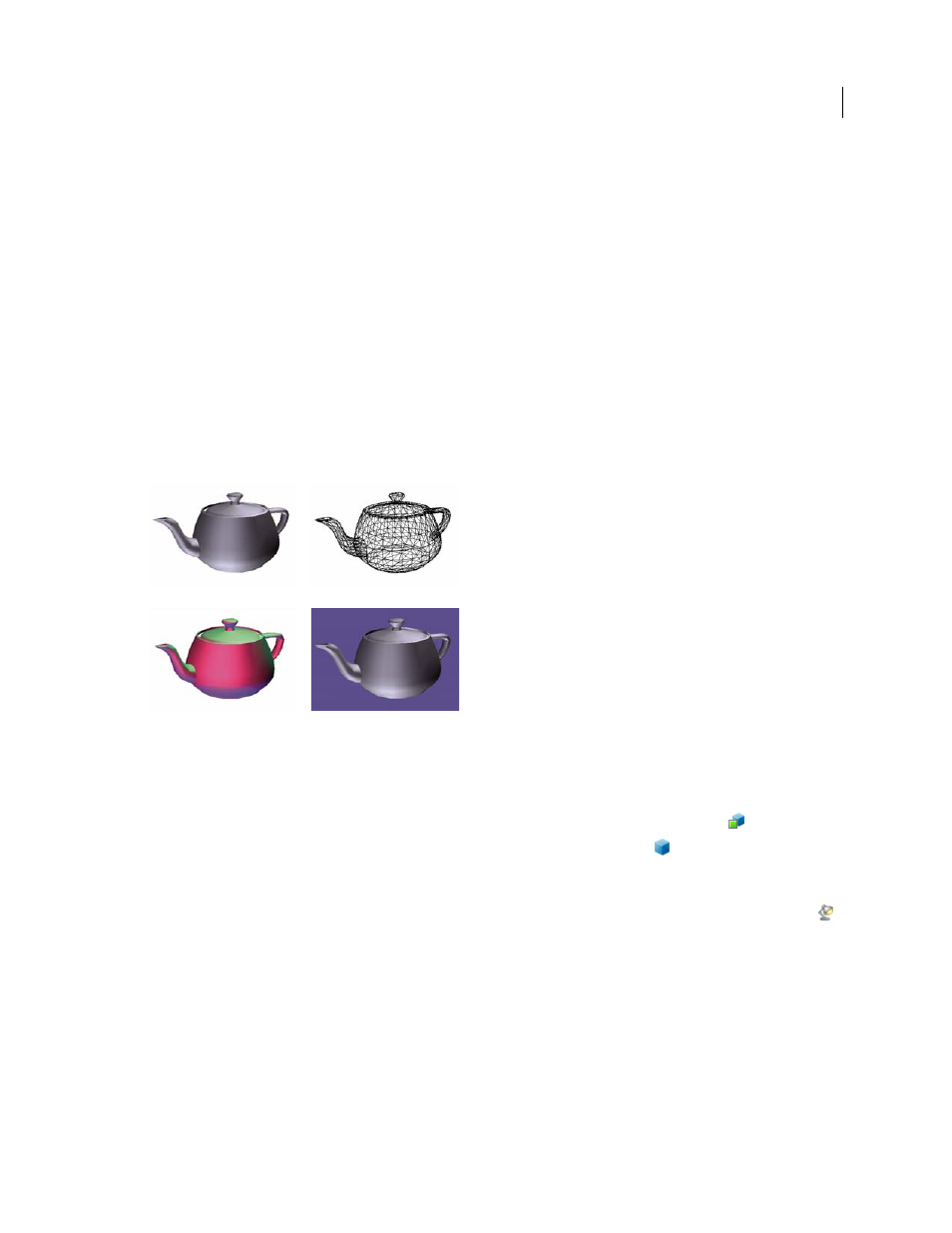Adobe Acrobat 9 PRO Extended User Manual
Page 396

390
USING ACROBAT 9 PRO EXTENDED
3D models and geospatial PDFs
Last updated 9/30/2011
•
Add animations.
•
Create exploded views and bills of material.
•
Export to neutral formats and raster and vector 2D files.
To edit a 3D model in an open PDF, right-click the 3D model and choose Edit In 3D Reviewer. (If you don’t see Edit
In 3D Reviewer in the menu, right-click the 3D model and choose Enable Content first. Also, if the file is protected,
you cannot edit it.)
To open 3D Reviewer outside Acrobat Pro Extended, choose Start > Programs > Adobe 3D Reviewer.
For more information about using Adobe 3D Reviewer, open 3D Reviewer and then choose Help > Help Topics.
Change rendering mode, lighting, projection, and background
The model rendering mode determines the surface appearance of the 3D model. The default rendering mode is usually
solid, but you can also choose another rendering mode. You can also change the lighting of the 3D model as well as
the background.
Changing the appearance of the 3D model
A. Default appearance B. Wireframe rendering mode C. Colored lighting D. Different background color
❖
Use items on the 3D toolbar to make any of these changes:
•
To change the rendering mode, choose an option from the Model Render Mode pop-up menu
.
•
To view an orthographic projection, click the Use Orthographic Projection button
. An orthographic projection
effectively removes a dimension, preserving the size ratio between objects but giving the 3D model a less realistic
appearance. Click the button again to use perspective projection.
•
To turn lighting on or off or to change lighting, choose an option from the Enable Extra Lighting pop-up menu
.
•
To change the background color, click the arrow next to the Background Color swatch and choose a color.
Note: Model rendering modes, lighting schemes, and background color options are also available by right-clicking the 3D
model, and then clicking Viewing Options. Model rendering modes also appear under the Options menu on the Model Tree.
More Help topics
Examples of model rendering modes
A
B
C
D
